Would you go to extremes to keep from spooking the buck you’re chasing? This hunter did, and it paid off with a monster 12-pointer a few days later
| Rack Report Details | |
|---|---|
| Buck: | 168 6/8 inches |
| Time of Year: | September 12, 2023 |
| Place: | Kentucky |
| Weapon: | Mathews Phase4 |
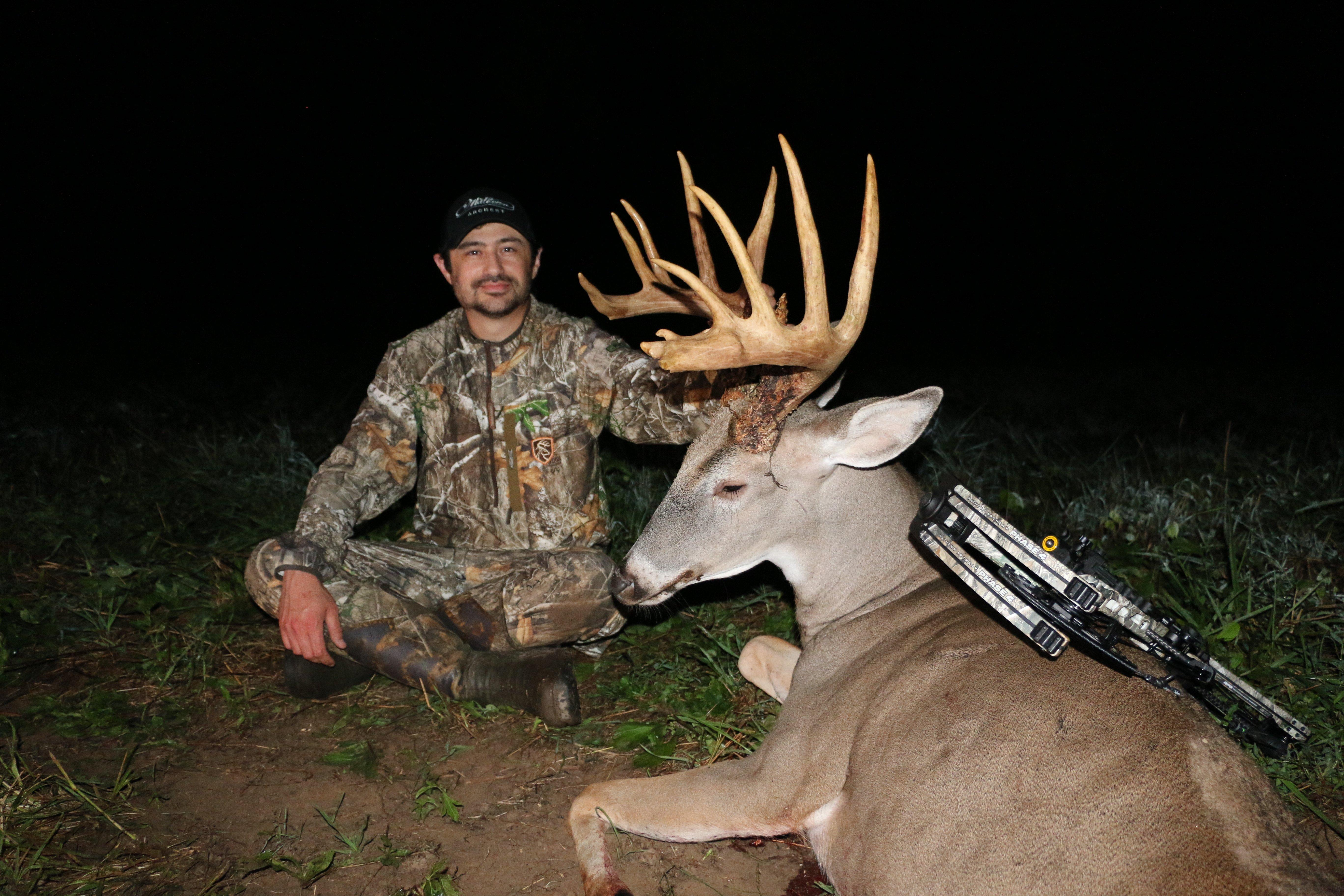
The author was blessed with an opportunity to arrow this fine Kentucky buck. Image courtesy of Josh Honeycutt
My 2023 deer season ended sooner than expected, but in a great way. After poring over trail camera photos, studying maps, and even sleeping in the treestand to keep from spooking the buck I was hunting, I filled my Kentucky tag. This is the story of the deer with two nicknames. A buck called “Split G4,” who eventually became “Big 12.”
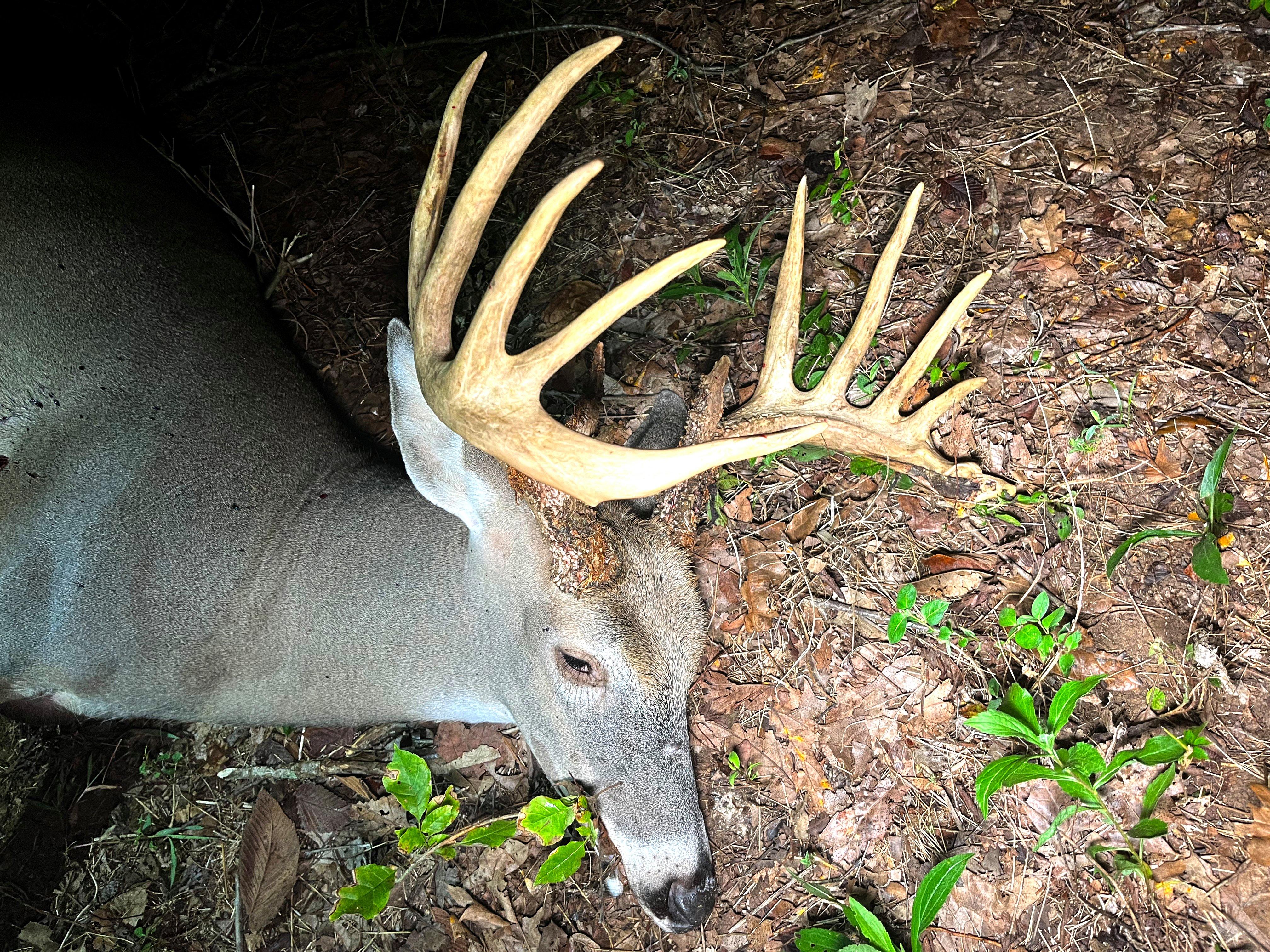
The end of the blood trail was a welcomed sight. Image by Josh Honeycutt
The Backstory
I first saw this buck when he was 2 ½ years old, but in 2022, at 3 ½, he blossomed into something special, with a 140-inch 6x6 frame that included split G4s. Last season, we put the deer on the no-shoot list to let him grow, but this year I thought he might be too big to pass up.
The property he frequented had been in CRP for about 15 years, but that contract ended this year and it was converted to row crops, with soybeans on one half of the open ground, and corn on the other. I hung trail cameras in early August, mostly focused around the perimeter of the soybeans in staging areas between bedding cover and the beans.
Within a few days of hanging cameras, Split G4 made his first 2023 appearance. While he still had a split G4 on his right side, he tossed the split on the left, and instead, added a stout G5. And so I renamed him “Big 12.”
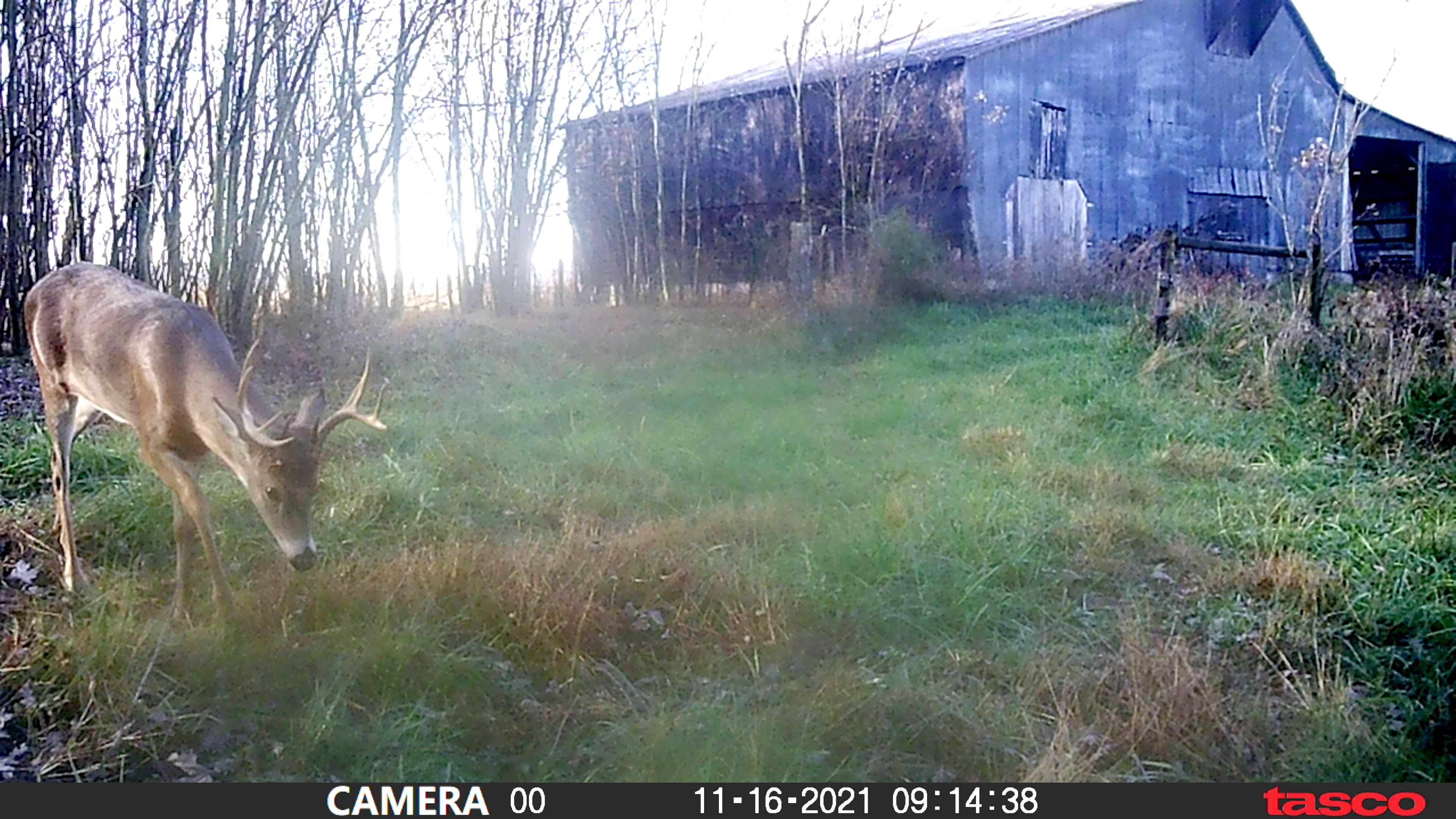
This deer wasn’t much at 2 1/2, but he showed promise. Image by Josh Honeycutt
I spent the next few weeks trying to pattern the deer. I attempted glassing him from afar, but never laid eyes on him. Still, he made the occasional morning, and even rarer afternoon daylight appearance, on trail cams. I thought he was living on a timbered hilltop, but his trail camera movements seemed arbitrary.
But as the days grew shorter and archery season neared, a slight pattern emerged. The Big 12 tended to use one of two bedding areas and he selected one each morning based on wind direction. The wind direction also seemed to influence what direction and destination food sources the deer departed to in the afternoons.
Despite the faint pattern, I still wasn’t confident in encountering the buck. I hung or repositioned six different stands around the buck’s hilltop core area. All were within a 150-yard radius, but I only felt confident in one of the locations.
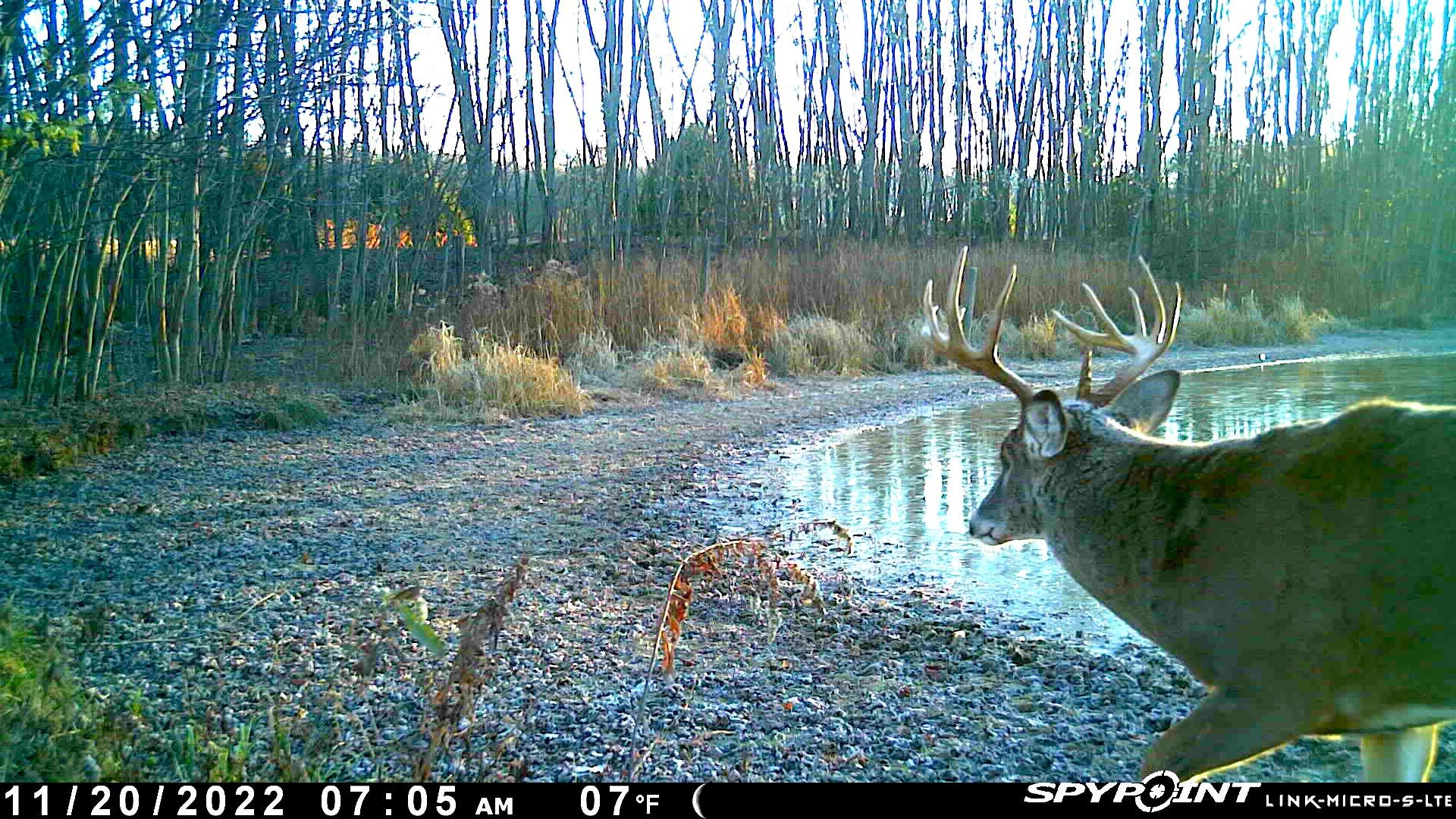
At 3 1/2, the deer started showing signs of genetic potential. Image by Josh Honeycutt
On Saturday, September 2, deer season began. I hunted the first afternoon and saw quite a few deer, including the two bucks Big 12 bachelored with all summer—a 2 ½-year-old 6-pointer and 5 ½-year-old half-rack buck. Both deer walked into bow range, but Big 12 didn’t show.
That’s weird, I thought. The three had been peas in a pod throughout the pre-season. To make matters worse, I spooked several deer walking out.
A day or two later, he re-appeared on trail camera, and without velvet. On opening day, he was likely off losing leather, which separated him from the gang. And once they parted ways, Big 12 became a loner, and even more reclusive. I decided to give the area a short rest, but I should’ve hunted. On September 6, a rain event and temperature drop spurred Big 12 to move, and I wasn’t there to intercept him.
The next day, my 3-year-old daughter Rosie and I eased into the property to freshen a corn pile near my stand (legal in Kentucky). With a persimmon tree dropping buckets a few yards away and green soybeans beyond that, the buffet was set. I decided to hunt again the following evening.
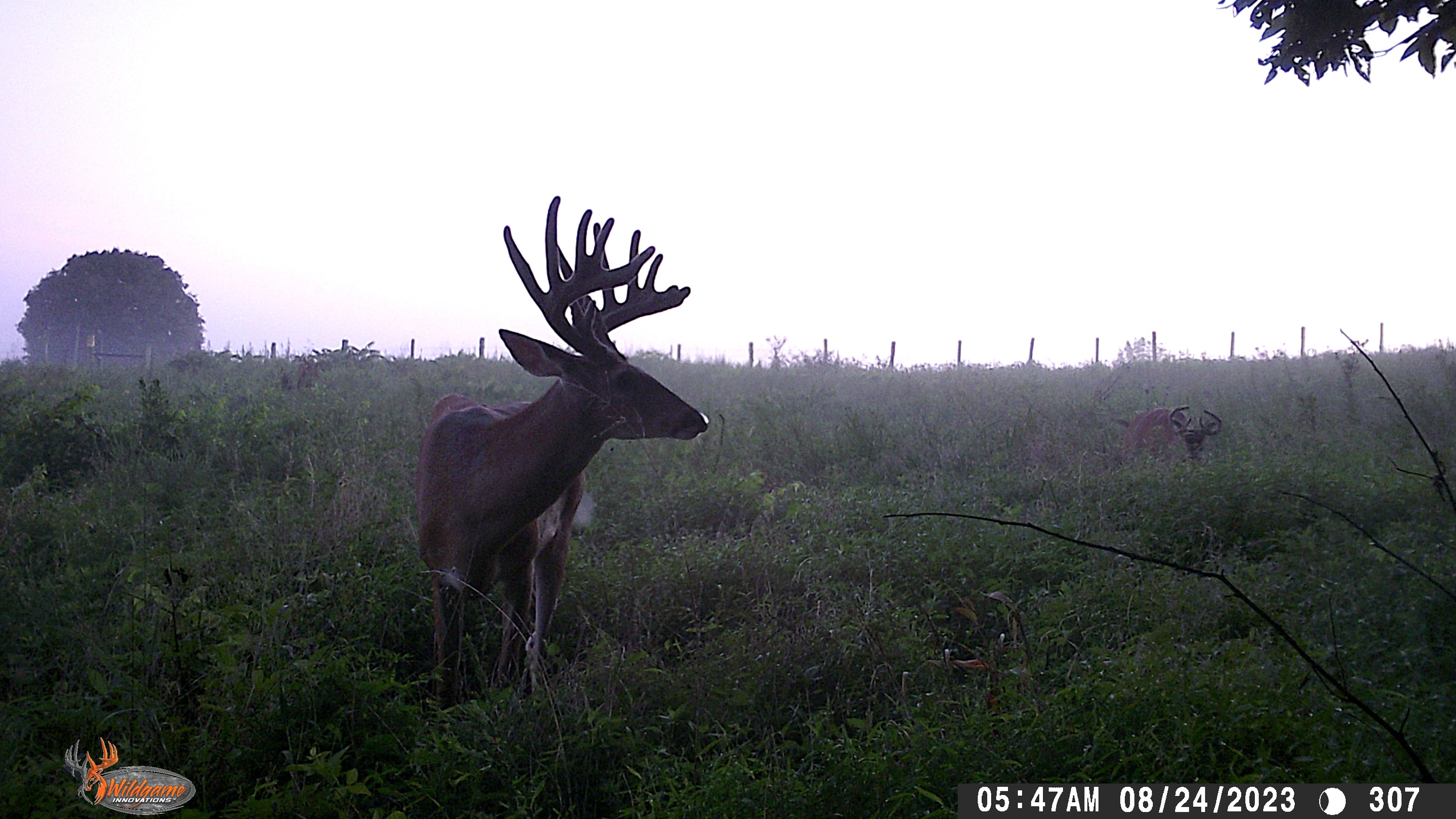
At 4 1/2, this whitetail pushed out quite a set of antlers. Image by Josh Honeycutt
September 8 didn’t bring a temperature drop, but it did offer the wind direction the buck seemed to prefer for that area. I saw several deer, included a few nice bucks. Unfortunately, Big 12 didn’t show. As the final seconds of legal shooting light ticked away, I stood up and packed my gear.
Out of habit, I looked up and scanned the soybean field. There he stood just 20 yards away. But legal light was over. I watched as the Big 12 fed down the hill and straight toward my truck.
I looked north and south, and deer dotted the soybean field in both directions. I couldn’t depart the area without spooking deer. Normally, I’d have barked like a dog or howled like a coyote to bump deer away from my setup. But this wasn’t a normal circumstance. The biggest deer of my life was a few hundred yards away and walking straight toward my truck. If I walked, I’d spook him. If I barked, he’d run toward my truck, and I’d spook him later.
So, I played my third card and decided to spend the night in the treestand. With my safety harness still strapped in, and another strap cinched around the tree trunk and my chest, I couldn’t fall out. I couldn’t even lean. Sleep wasn’t an option from a comfort or safety standpoint. Eventually, the morning sun peeked over the horizon. Already there, I settled in for the AM hunt. I saw plenty of deer, but not Big 12. Around mid-morning, I went home and slept off the all-nighter.
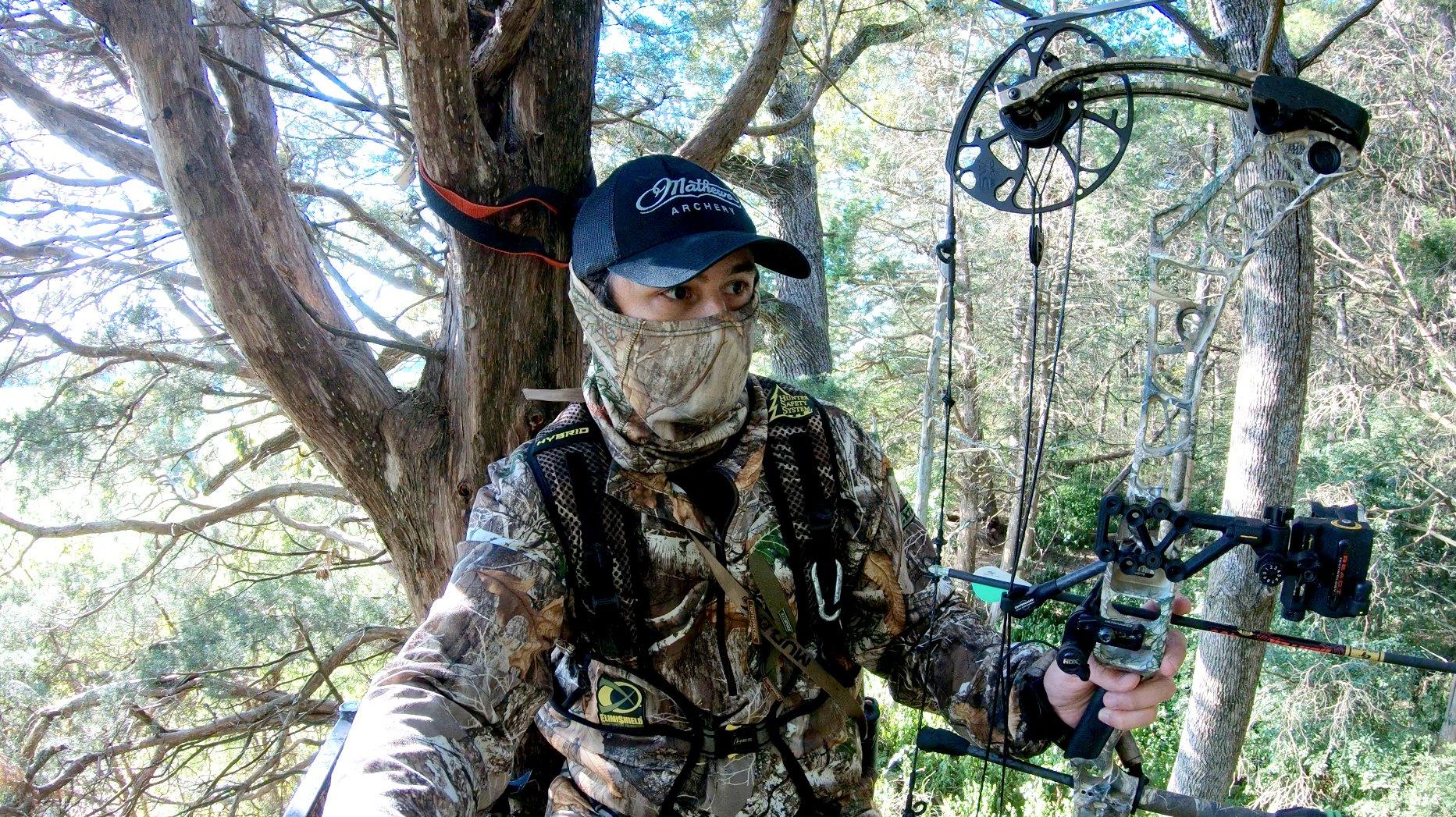
On the third sit of the season, the author spotted the buck walking down out of the cedar thicket bedding area. Image by Josh Honeycutt
September 12
Some research suggests temperature drops don’t boost deer movement. I’m no biologist, but I call bologna. Give me a good temperature drop, and mature buck movement ramps up. I’ve seen it happen too many times. September 12 was another of those days.
With heavy cloud cover, misting rain, and Big 12’s favorite wind to pass by my primary stand location, I loaded the Chevy and headed north.
Upon arrival, I followed a good entry route and settled in. The wind was blowing slightly differently than forecast, but good enough to set up with another just-off wind. I thought the buck should exit the bedding area with the wind in his nose, but I didn’t think he’d hit my scent cone until it was too late.
For insurance, I put two ozone units on full blast. Good thing I did, too, because at least seven or eight deer made it downwind throughout the hunt. Not one flinched, though. Hunting in a cedar tree and implementing ozone paid off.
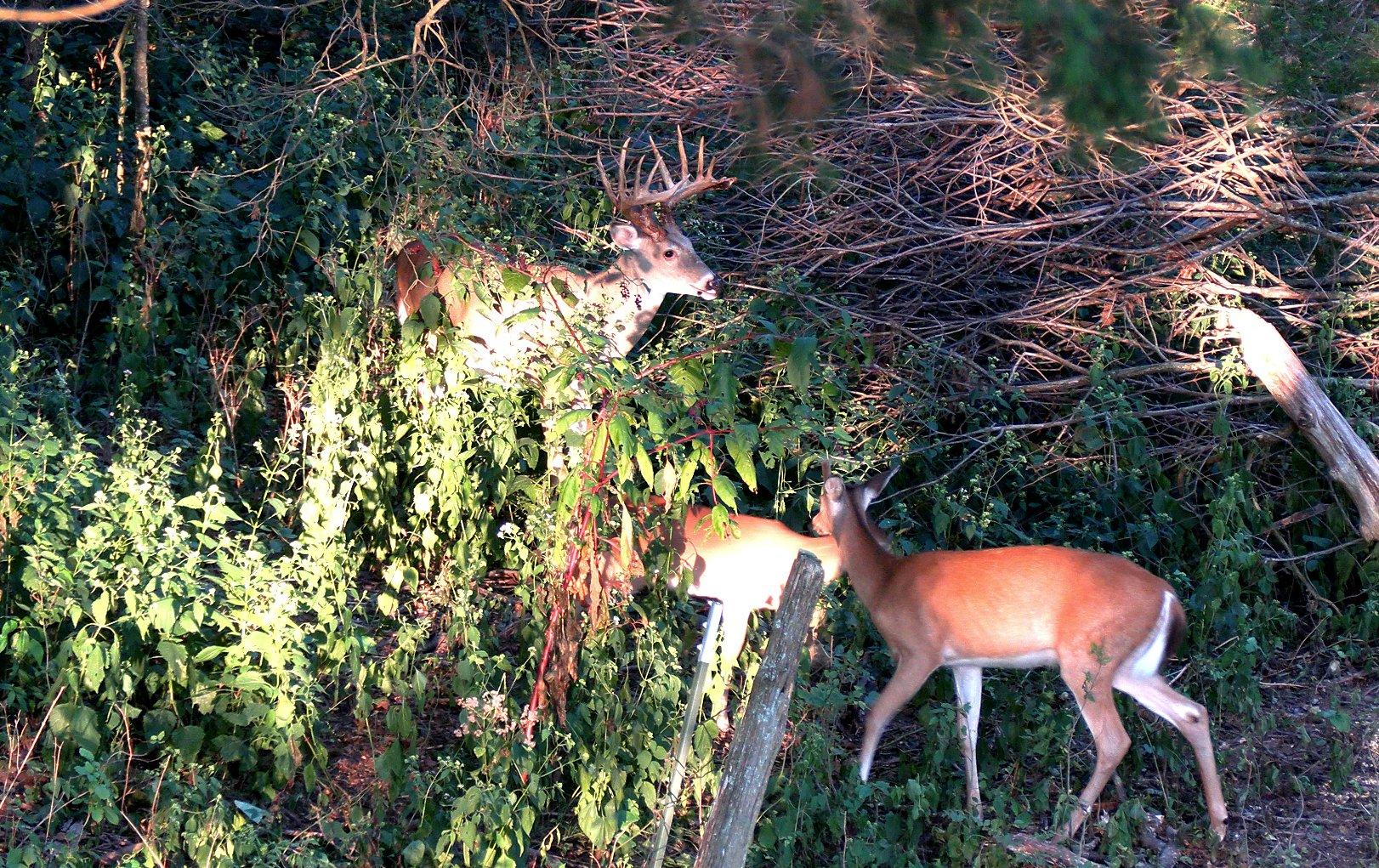
The author had to watch the buck for about 5 minutes before getting a shot opportunity. Image by Josh Honeycutt
The evening progressed, and several nice young bucks, does, and fawns filtered down off the hill. They fed on the abundant persimmons, intermittent pokeberry plants, other browse, and yes, the corn pile. Eventually, each deer sauntered out into the soybean field behind me.
As the afternoon sun sunk lower, the clouds faded, and the landscape saturated with a golden hue. With an hour of daylight remaining, and a couple nice bucks in front of me, I caught movement up in the timber. Every deer around me came to attention at once, and I knew Big 12 was coming.
Within minutes, I spotted his rack materialize 40 yards away under a towering cedar tree. Slowly, over the next five minutes, the deer walked the remaining 15 yards. As he stepped into the corn pile, I slowly drew back, settled the pin, and took the 24-yard shot. As expected, he jumped the string and fell right into the arrow. Even so, the hit was slightly lower than I hoped. Furthermore, as the arrow neared the off-side ribs, it deflected backward and downward, exiting even lower.
Big 12 mule-kicked, dashed about 40 yards, and stopped. I watched the top of his rack sway left and right, and then nothing. I didn’t know if he bedded, dropped, or took off again.
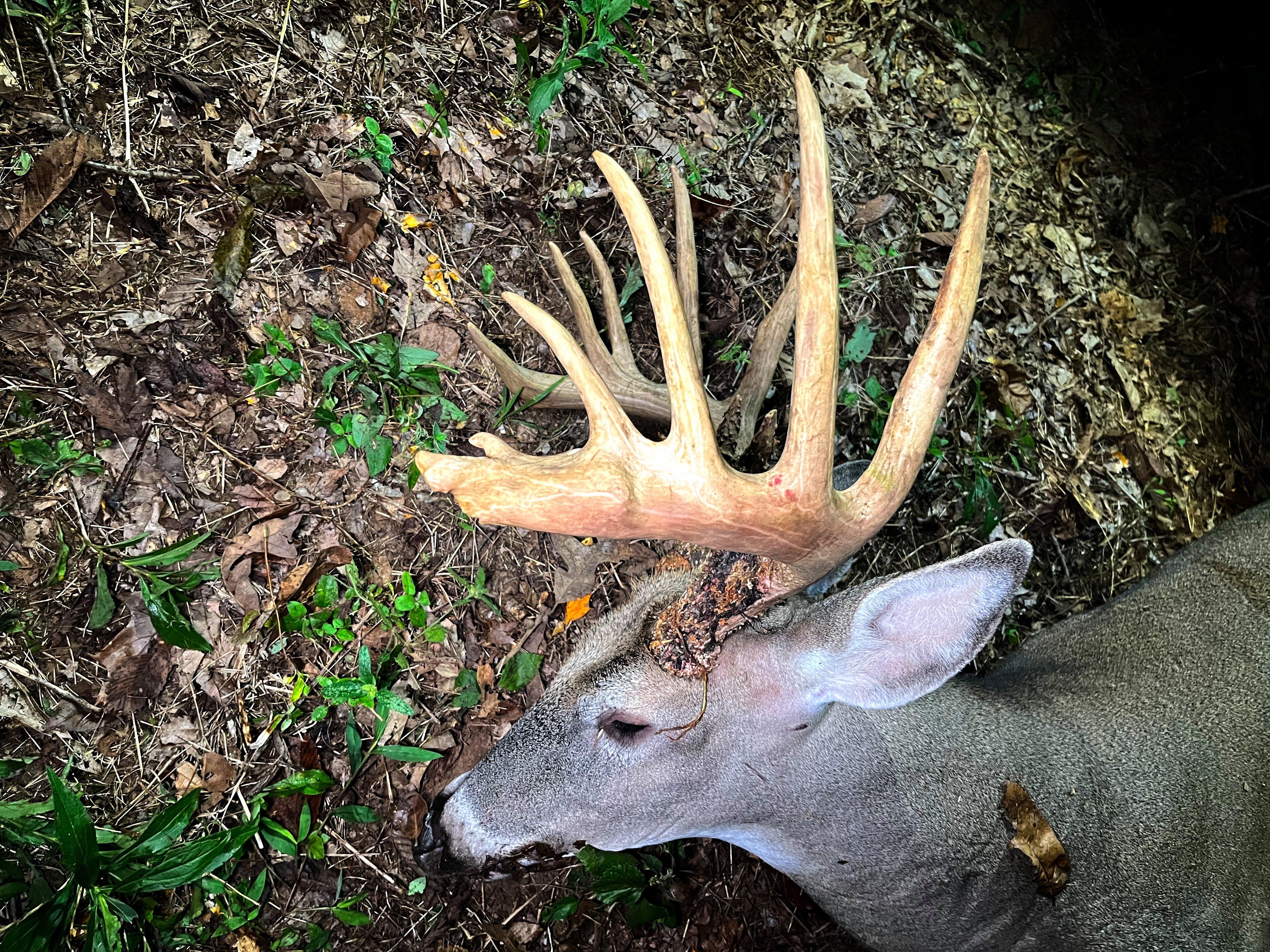
This Kentucky buck carried impressive mass, pushing its overall score close to 170. Image by Josh Honeycutt
Worried about the shot, I stayed put. About 45 minutes later, as daylight faded, I climbed down and retrieved my arrow. With dropping temps, I backed out. After talking with several trusted deer hunters, I decided to give the buck some time. Depending on how badly the arrow deflected, it could have been a one-lung and liver hit, or worse.
Around midnight, my father, a friend, and I resumed the blood trail. About 10 yards in, it opened into the largest blood trail I’ve ever seen. Three minutes and 70 yards later, we found my buck.
Green-scoring 168 6/8 inches, Big 12 is my biggest buck to date. Was sleeping in the stand worth it? I firmly believe I would’ve spooked him off his pattern, or even the area, if I’d walked back to the truck that night of September 8th. Now that I’m caught up on rest, it’s just another detail in the story.
Don’t Miss: 81 WAYS TO FAIL AT DEER HUNTING










